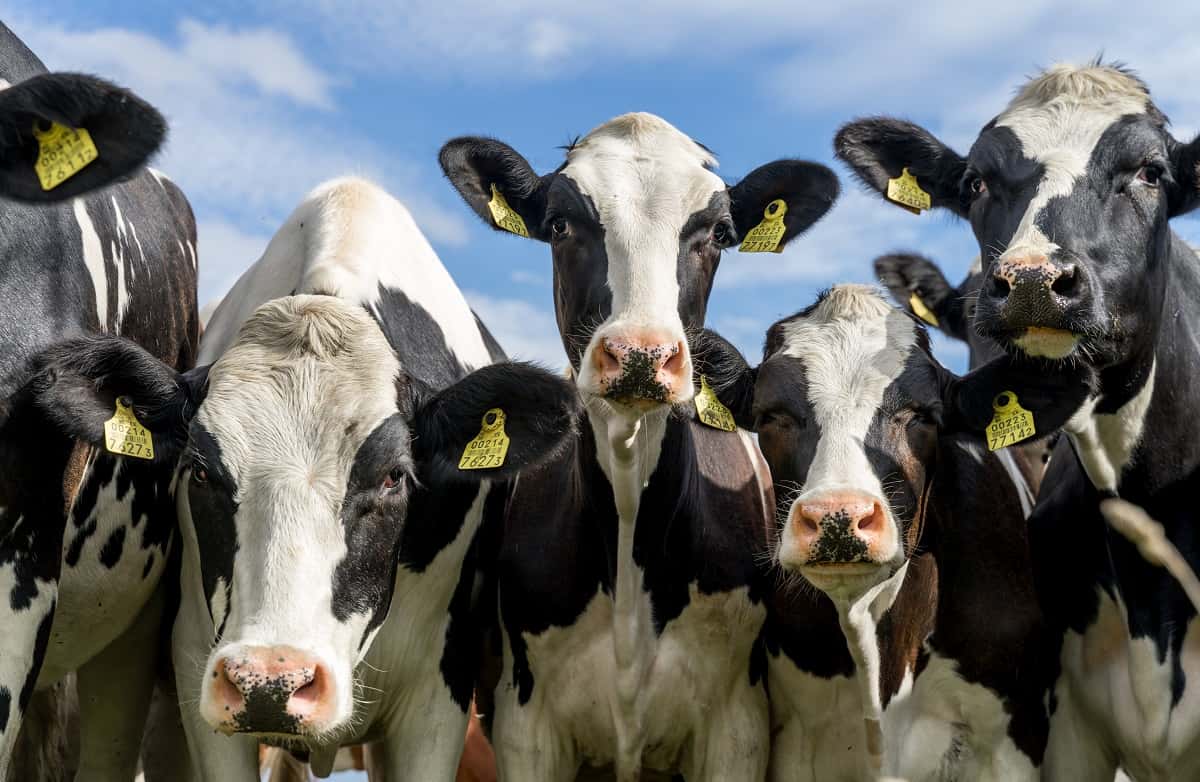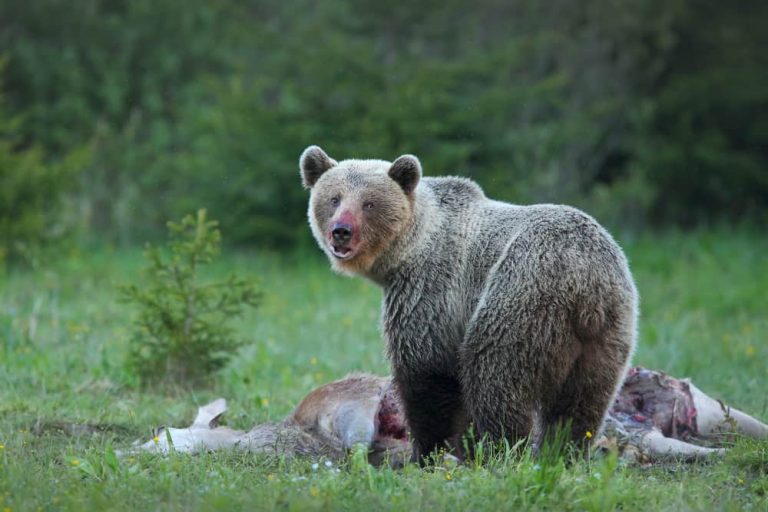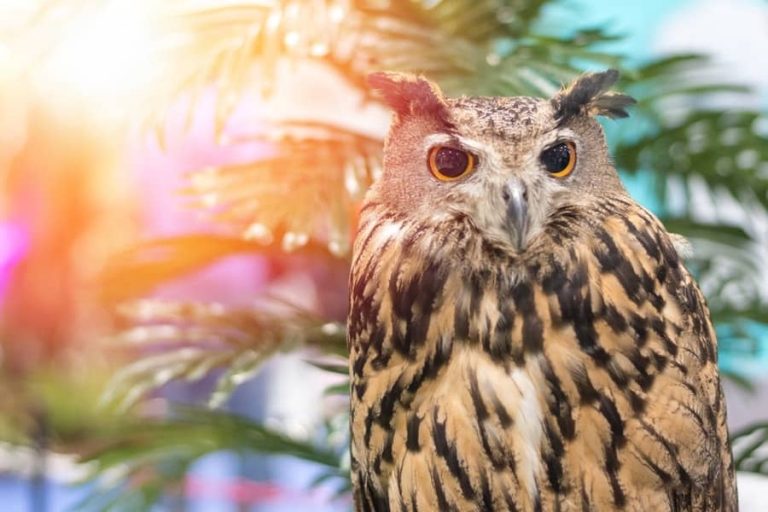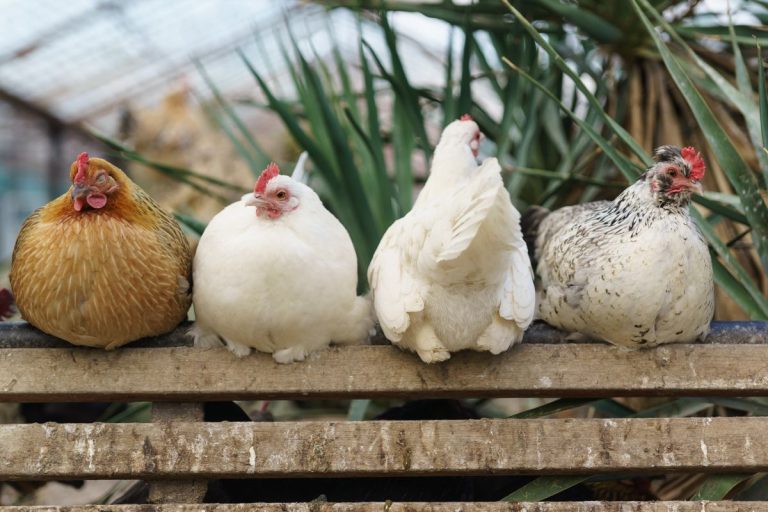Animals With Multiple Stomachs: How Does That Even Work?
So, are there animals with multiple stomachs out there or not? Yes and no.
Keep reading and, by the end, I promise this “yes and no” will make perfect sense.
There are several types of animals with their stomachs so complex that they led many people into the erroneous idea that these animals have more than one stomach.
The most popular animals known to have multiple stomachs are the ruminant animals, which, in reality, is one stomach with four compartments: the rumen, reticulum, omasum, and abomasum.
But that is not the only stomach-wonder we find in the animals’ realm: there are also animals with two-chambered stomachs, three-chambered stomachs, or even up to thirteen chambers of the stomach.
Animals With Two-Chambered Stomachs
Alligators
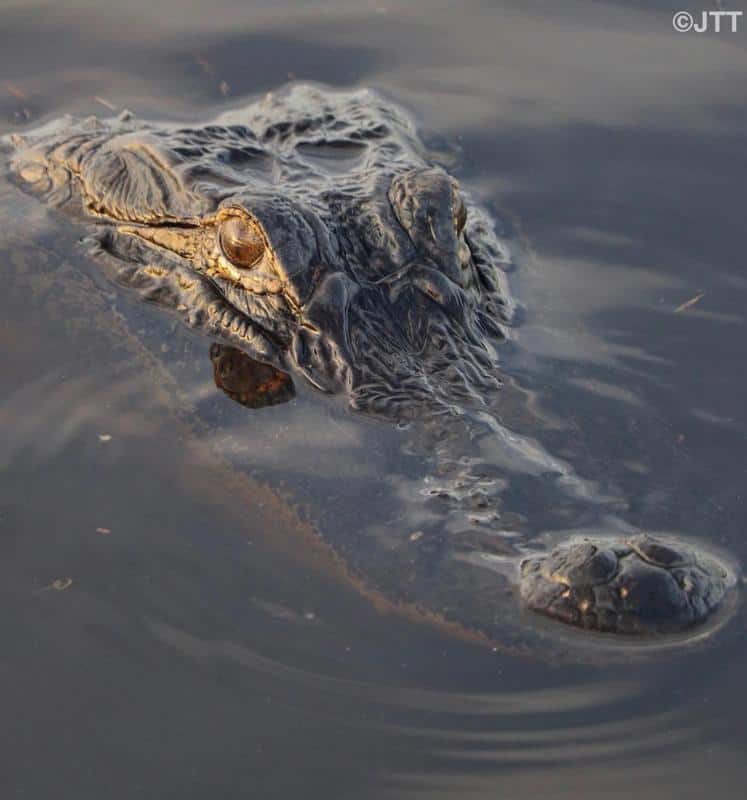
The alligator is a crocodilian reptile, has a two-chambered stomach, and it feeds on fish, insects, snails, crustaceans (at young ages), and larger fish, turtles, mammals, birds (at adult age).
The first chamber of the alligator’s stomach is smaller and contains gastroliths (gizzard stones).
It is believed to serve the same purpose for alligator’s digestion as gizzards do for birds: to aid digestion by grinding.
The alligator’s feeding habit involves bitting big chunks of prey or even swallowing whole some smaller prey; thus, this first chamber has the role of grinding the food.
Once the meal has been ground and processed, it moves further into the second, bigger chamber of the alligator’s stomach, a chamber with high acidity that increases during digestion.
That happens because the animal’s body seems to direct more blood towards the stomach during digestion to increase the quantity of CO2, which helps increase the gastric acid concentration.
Alligator is among the species saved from extinction, which now thrives, being raised commercially for their skin and meat.
Dolphins

Dolphins are aquatic mammals that feed mainly on fish and squid, but two species also feed on other marine mammals.
Dolphins have a double-chambered stomach, with a fundic chamber and a glandular chamber, and it has a structure similar to the terrestrial carnivores’ stomachs.
This stomach split seems to result from the animal’s adaptation to the underwater environment to manage the variability of feeding opportunities and take advantage when it finds abundant prey.
Therefore, the first chamber of the dolphin’s stomach is the biggest, and it can stretch so it can store as much food as possible.
The second chamber is the glandular chamber, where are secreted the necessary enzymes which break down the nourishment.
There are 40 extant species of dolphins, some of them with double-chambered stomachs but others with the three-chambered stomach.
Dolphins with three-chambered stomachs have a third compartment, the pyloric chamber, which controls the flow of food going into the much thinner intestine.
A dolphin weighing between 180 kg and 230 kg eats 11 to 22 kg of fish daily – does that give you a slight idea about how large that first stomach chamber can stretch?
Animals With Three-Chambered Stomachs
Ostriches
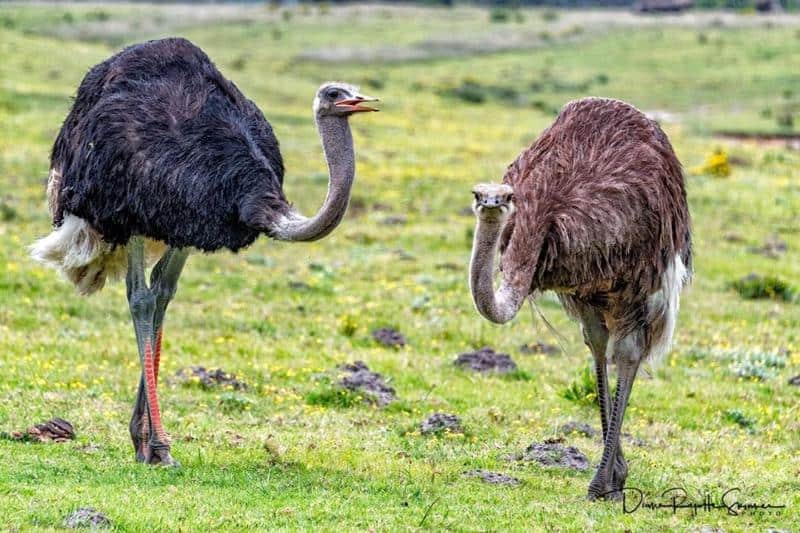
Ostrich is a flightless bird, the largest and heaviest living bird, with only two species left (common ostrich and Somali ostrich).
Although the bird’s diet is omnivorous, the ostrich doesn’t have teeth, compensating for that with nearly one kg of pebbles, rocks, and sand in its gizzard (in an adult ostrich).
The ostrich has a three-chambered stomach, rough intestines up to fourteen meters long, and it is the only bird that secrets urine and feces separately.
Due to such a multiple-chambered stomach and the rough intestine, the ostrich can digest things that other animals can’t digest.
Therefore, their diet varies from roots, leaves, and seeds to insects, lizards, snakes, and even rodents.
The ostrich is native from Africa, although it is now farmed worldwide mainly for the feathers (used for decoration or feather dusters).
Above that, farm-raised ostrich is an excellent source of eggs, leather, and highly appreciated meat, with cholesterol lower than beef’s.
Also Read: Can Ostriches Fly: How Did Ostriches Evolve But Remained Flightless Birds?
Hippopotamus
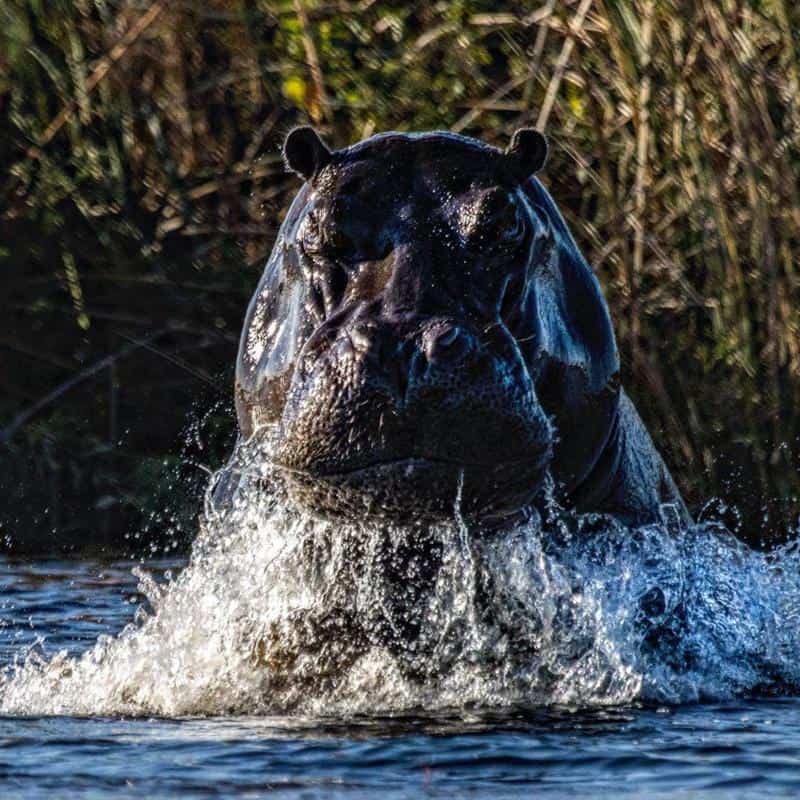
The hippopotamus is a herbivorous semiaquatic large mammal that spends most of its life in the water, and it goes on land at dusk to forage on short grasses.
The hippo travels up to fifteen kilometers on land to find food, grazes up to five hours, and eats up to sixty-eight kilograms of greenery per night (not that much considering the animal’s size).
Therefore, the hippo’s stomach is adapted to obtain nutrients efficiently from the poorer-energy nourishment.
The hippo’s stomach has three chambers (the parietal blind sac, the stomach, and the glandular stomach), where the microbial fermentation process precedes the enzyme-catalyzed digestion.
This microbial fermentation before the digestion classifies the hippopotamus (next to sheep, goats, kangaroos, and cows) as foreguts fermenters.
Although the hippopotamus’ stomach’s anatomy is not constructed for meat consumption, there have been reports of hippos eating meat, preying, and even human flesh, all accounted as nutritional stress or aberrant behavior.
Also Read: What Do Hippos Eat: Grazing and Scavenging
Alpacas (Camelidae)
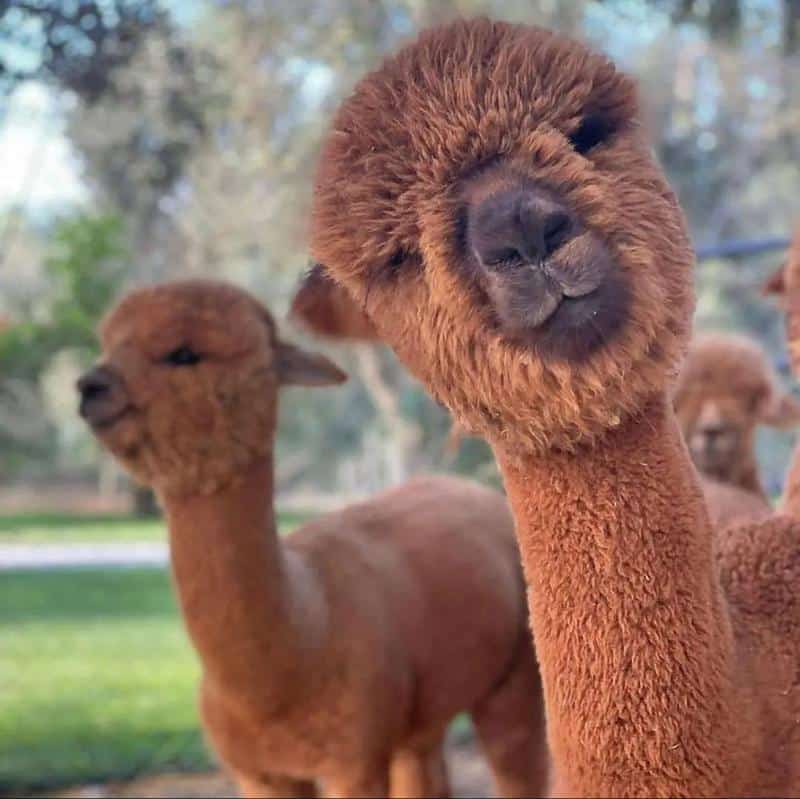
Alpaca (Lama pacos) is a herbivorous mammal from the Camelidae family (along with the camels and llamas).
Camelidae are large, exclusively herbivorous animals with thin necks, long legs, and three-chambered stomachs.
This three-chambered alpaca stomach (and other Camelidae) allows the animal to get the maximum nutrients from forages poor in nutriments.
The alpaca (as the rest of the Camelidae) is not considered a ruminant even though the animal chews its food (with a movement shaping number eight).
The chewed nourishment goes in the first two stomach chambers, where fermentation starts.
The first part of the third chamber is where the water and nutrients are being absorbed and
the last part of the third stomach chamber secrets the acid necessary for food digesting.
When an alpaca “spits”, it throws out a mix of air, saliva, and acid stomach substance (usually grassy green), resulting from the hanging lower lip and open mouth, which gives to the animal the so-called “sour mouth”.
Animals With Four-Chambered Stomachs
Cattles
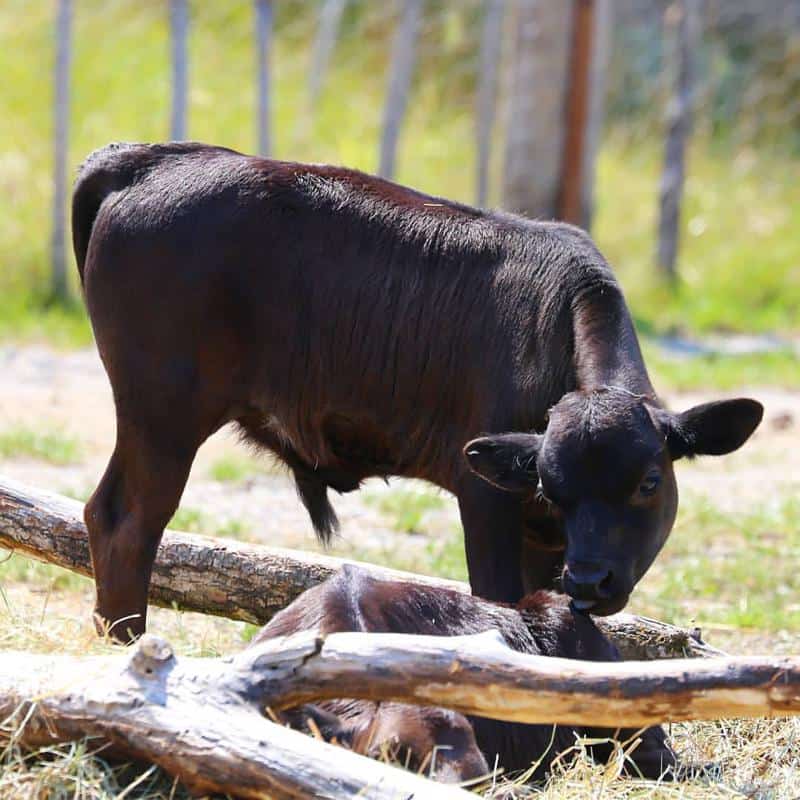
The cattle (Bos taurus) is a sizeable ruminant domesticated herbivore with split hooves raised for meat, milk, and leather.
Ruminants are animals with the digestive system adapted to extract nutriments from hardly digestible nourishment, such as greenery and hay.
Because, when the animal feeds, the food is stored un-chewed into the rumen, the cattle regurgitate and re-chew the food, a process known as rumination.
The cud (the regurgitated food), stored into the rumen as balls of cud, is chewed into small particles and swallowed again for digestion to continue.
The rumen is the largest chamber, and it has the role of absorbing nutrients and facilitating the fermentation that creates rumen bacteria and microbes that disintegrate and digest the proteins.
The reticulum facilitates regurgitation by trapping large food particles too big to be digested.
It is attached to the rumen with thin tissue, and it also holds things swallowed by the animal by mistake (rocks, metal pieces).
The omasum is smaller than the rumen and reticulum; it has a structure of folded tissues, similar to the pages of a book, and absorbs water and nutrients after the second chewing.
The abomasum chamber is also called “the true stomach” because that’s the part where glands are and function most similarly to a non-ruminant stomach.
The abomasum is the smallest chamber of the cattle’s stomach chambers, representing only 4% of the whole stomach’s volume.[1]
Now that you are acquainted with the ruminant digestive system, let’s see what other animals are out there with multiple, four-chambered stomachs.
Deers
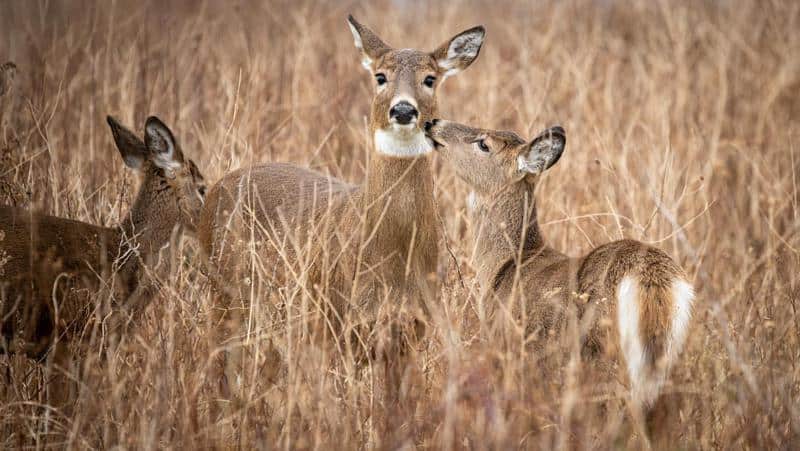
Deers are ruminant mammals, classified into two main groups: Cervinae (fallow deer, red deer, elk, and muntjac) and Capreolinae (moose, caribou, roe deer, and white-tailed deer).
Deers have a smaller stomach, somehow under the standards of an actual ruminant stomach, so the animal feeds on the quickly digesting greenery (baby leaves, new grasses, silky fungi and lichens, soft fruits, and crude twigs).
After minimal fermentation and grinding, the young, low-fibered nourishment passes fast through the digestive system of the deer.
(I guess that deers know the best what the “fast food” concept is all about.)
However, large quantities of calcium and phosphate are needed for the animal to grow the antlers, which requires a nutrient-rich diet, so we must notice the efficiency of their digestive system.
Fun fact: there are reports of deers engaging in carnivorous activities like eating dead herring along the coastline or looting northern bobwhites’ nests.
Giraffes
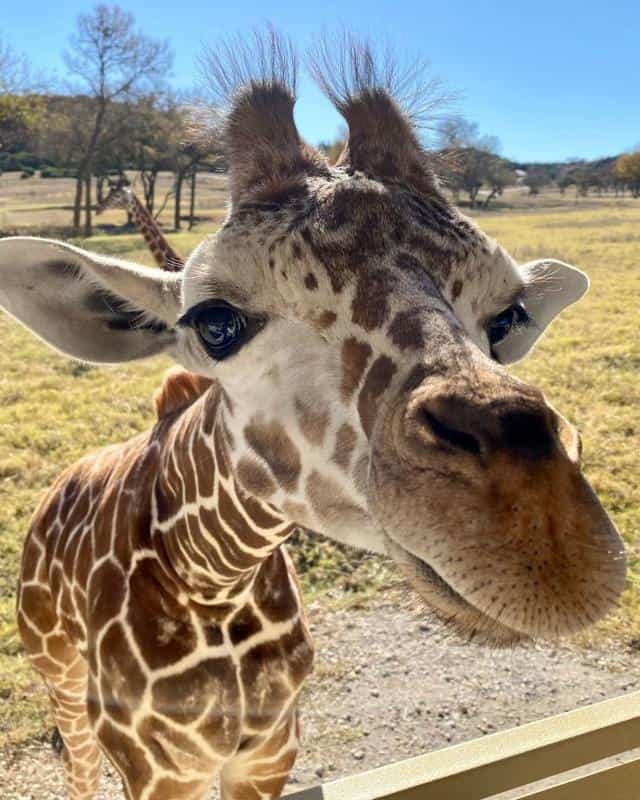
The giraffe is the tallest living mammal and the largest ruminant, with eight extant species and seven extinct species.
Now, it is hard to believe that anything can climb back up in the mouth through that long neck typical to this majestic creature.
But the giraffe is ruminant, has a four-chambered stomach, like all ruminants, and regurgitates and re-chews the food.
The giraffe has surprisingly strong esophagean muscles that make regurgitation possible.
Regarding the preferred diet, the giraffe enjoys the young twigs from the top of the trees of Cammifora and Terminalia for their protein and calcium, necessary to the animal’s growth.
The giraffe completes its diet with fruits, shrubs, and grass, and, compared to other ruminants, it chews the food when eating.
The giraffe swallows the chewed food, which is processed before it goes back up into the animal’s mouth for the second chewing.
Due to the giraffe’s efficient digestive system and the rich-nutrient leafage it consumes, the long-necked mammal requires less nourishment than other herbivores.
Also Read: What Do Giraffes Eat? The Diet Of The Tallest Animals In The World
Sloths
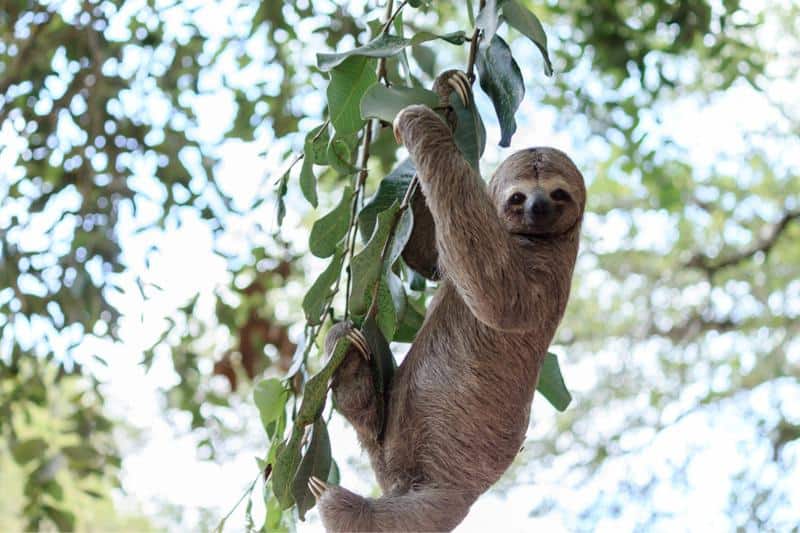
The sloth is the mammal with the slowest metabolism of them all, meaning it takes a long time to digest, pretty much anything.
The sloth has a four-chambered stomach, adapted to feed on the tough, rubbery leaves of the rainforest and resist the toxins that those leaves contain.
Therefore, the sloth is adapted to function on low energy use due to their diet, poor in calories and nutrients.
The sloth’s stomach hosts a mix of bacteria that slowly decompose the leaves; these bacteria can die if the animal’s body temperatures go too low, as the sloth cannot control its corporal temperature.
Due to its slow metabolism, the sloth needs to take regular sunbaths to keep its body temperature high, a feature shared with reptiles.[2]
Cachalot Whales
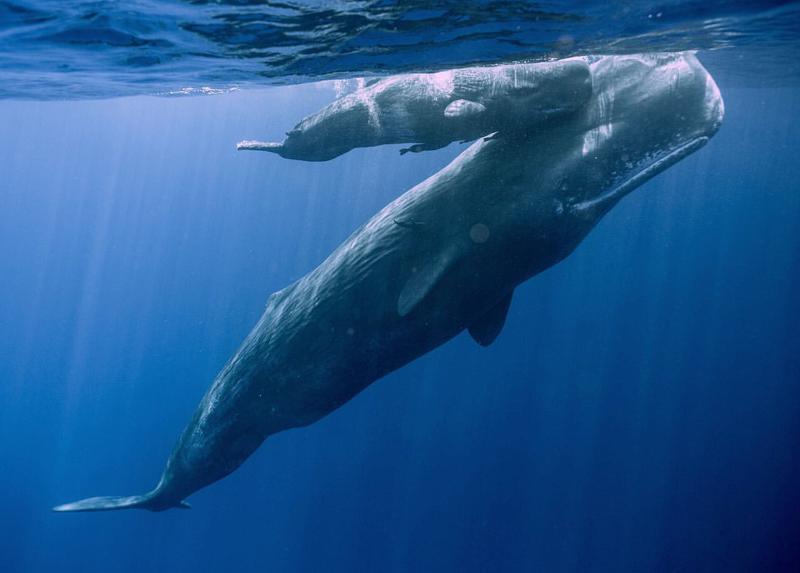
The cachalot whale, also known as the sperm whale, is a carnivorous giant aquatic mammal, the biggest toothed whale, and the largest predator.
Just like the ruminants, the cachalot whale’s stomach has four chambers, but it functions a bit differently than the ruminants’ stomachs – the whale doesn’t ruminate.
Despite the big teeth, the cachalot whale cannot chew its prey, so the first chamber of its stomach (the rumen), made of thick muscular walls, has the role of crushing the food with muscular movements called peristalsis.
Everything is then taken up by the second chamber called the “cardiac stomach “, where are produced the acid and enzymes necessary for digestion.
The digested food keeps going through a narrow passage, the third chamber, only to reach the pylorus, the final chamber of the cachalot whale’s stomach.
The numerous mucus glands facilitate the intestinal transit, the swallowing of prey whole, and the digestion of chitin (an amide derivative of glucose found in krills’ exoskeletons).
Animals With Thirteen-Chambered Stomach
Beaked Whales

The beaked whales are toothed deep-diving predators, feeding on fish and squid. Nothing unusual so far, is it?
Nothing unusual further either – the beaked whales’ stomachs have four main chambers: the forestomach, main stomach, several small connecting chambers, and the pyloric stomach.
The connecting compartment is not the only multi-chambered one; to some species, all four compartments are divided into smaller chambers, which are also called stomachs.
The number of these “stomachs” varies among the species and within the individuals of the same species:
Some beaked whale species have seven to ten chambers only between main and pyloric stomachs, summing a total of even to fourteen stomachs.
Starting from the similarity of stomachs between whales and ruminants, some theories speculate that whales are considered descendants of terrestrial two-hooved herbivores (thus, related to cows, sheep, deers, goats, and giraffes).
Also Read: Animals With Multiple Hearts: Such Things Even Exist?

